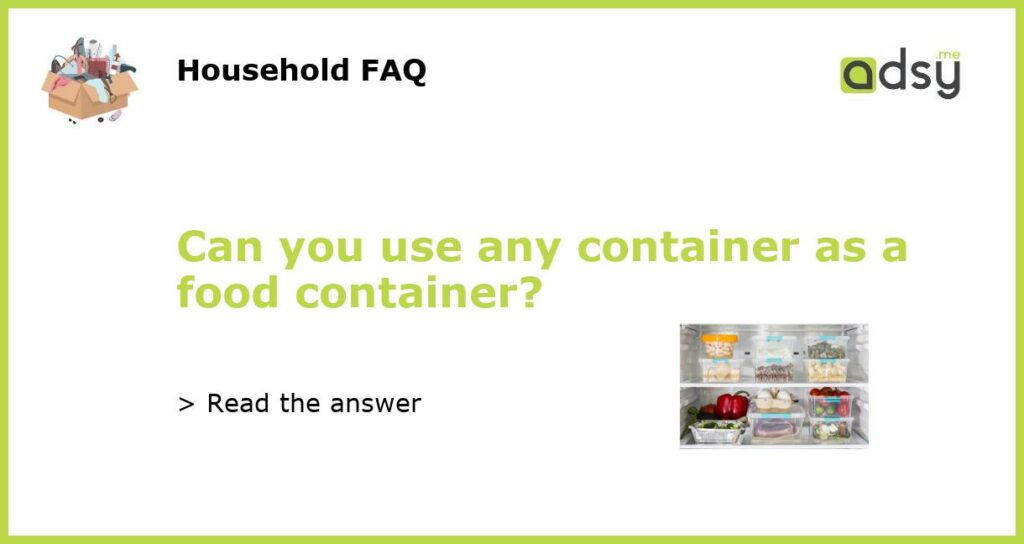What Makes a Good Food Container?
Food containers play a vital role in keeping our meals fresh and safe for consumption. But can you use just any container as a food container? In short, no. When it comes to food storage, different containers are designed to cater to specific food types and storage requirements.
The Risks of Using Inappropriate Containers
Using the wrong food container exposes you to different risks such as contamination, spoilage, and even health risks. For instance, metal containers can react with acidic foods or cause cross-contamination if not cleaned properly. Reusing soft plastic containers, on the other hand, may release harmful chemicals into your food.
The Ideal Containers for Different Foods
Here are some of the ideal containers for different foods:
- Leftovers – Glass containers with airtight lids
- Lunches – Bento boxes or stainless steel containers with separate compartments
- Liquid Foods – Mason jars with screw-top lids
- Baked Goods – Airtight metal tins or glass containers
Additional Storage Tips
When storing your food, always consider the temperature and light exposure. Foods that require refrigeration should be stored at temperatures below 40°F to prevent bacteria growth. Additionally, clear containers should be kept away from direct sunlight to avoid temperature fluctuations and oxidation.
The Bottom Line
While it may be tempting to use any available container for your food, it’s always best to use specialized containers that cater to your specific food storage needs. Investing in the right storage containers will not only help keep your meals fresh but also help minimize waste and keep your health in check.






![[10-Pack]Glass Meal Prep Containers -MCIRCO Food Storage Containers with Lifetime Lasting Snap Locking Lids, Airtight Lunch Containers, Microwave, Oven, Freezer and Dishwasher](https://m.media-amazon.com/images/I/41ZdkMs1ciL.jpg)